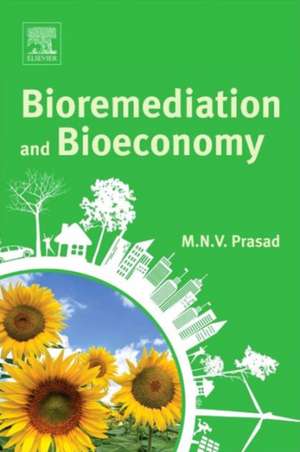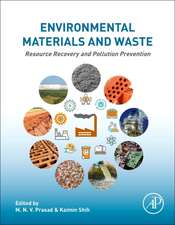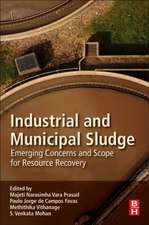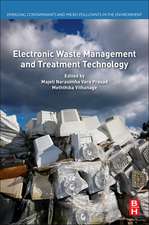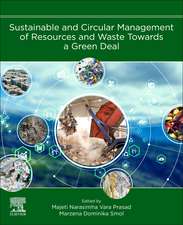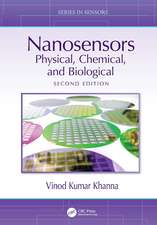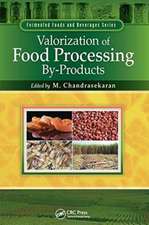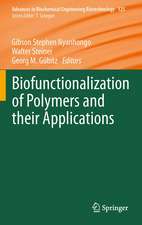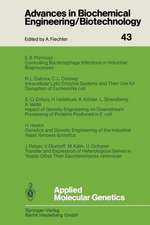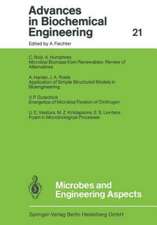Bioremediation and Bioeconomy
Editat de Majeti Narasimha Vara Prasaden Limba Engleză Paperback – 26 noi 2015
In addition, large amounts of toxic waste have been dispersed in thousands of contaminated sites and bioremediation is emerging as an invaluable tool for environmental clean-up.
The book addresses these challenge by presenting innovative and cost-effective solutions to decontaminate polluted environments, including usage of contaminated land and waste water for bioproducts such as natural fibers, biocomposites, and fuels to boost the economy.
Users will find a guide that helps scientists from various backgrounds find sustainable solutions to these environmental issues as they address the topical issues crucial for understanding new and innovative approaches for sustainable development.
- Provides a compilation of new information on phytoremediation not found in other books in the present market
- The first book to link phytoremediation and the bioeconomy
- Includes strategies to utilize contaminated soils for producing bioresources and co-generation of value chain and value additions products
| Toate formatele și edițiile | Preț | Express |
|---|---|---|
| Paperback (2) | 506.72 lei 5-7 săpt. | |
| ELSEVIER SCIENCE – 26 noi 2015 | 506.72 lei 5-7 săpt. | |
| ELSEVIER SCIENCE – 23 noi 2023 | 641.94 lei 5-7 săpt. |
Preț: 506.72 lei
Preț vechi: 648.52 lei
-22% Nou
Puncte Express: 760
Preț estimativ în valută:
96.97€ • 99.31$ • 80.67£
96.97€ • 99.31$ • 80.67£
Carte tipărită la comandă
Livrare economică 11-25 martie
Preluare comenzi: 021 569.72.76
Specificații
ISBN-13: 9780128028308
ISBN-10: 0128028300
Pagini: 730
Dimensiuni: 191 x 235 x 41 mm
Greutate: 1.47 kg
Editura: ELSEVIER SCIENCE
ISBN-10: 0128028300
Pagini: 730
Dimensiuni: 191 x 235 x 41 mm
Greutate: 1.47 kg
Editura: ELSEVIER SCIENCE
Cuprins
I. Bioproducts from contaminated substrates (soil and water)
1. Trace element contaminated agrocenoses in Ukraine for production of biodiesel
2. Energy plantations, medicinal and aromatic plants on contaminated/ metalliferous soil
3. Prosopis juliflora (Sw) DC – potential for bioremediation and biobased economy
4. Giant reed (Arundo donax L.): a multipurpose crop bridging phytoremediation with sustainable bio-economy
II. Biomass Energy, Biodiesel and Biofuel from contaminated substrates
5. Biomass energy from revegetation of landfill sites
6. Bioenergy from phytoremediated phytomass of aquatic plants via gasification
7. Jatropha curcas L. cultivation on constrained land - Exploring the potential for economic growth and environmental protection
8. Potential of castor bean (Ricinus communis L.) for phytoremediation of metalliferous waste assisted by plant growth promoting bacteria – possible cogeneration of economic products
III. Ornamentals and crops for contaminated substrates
9. Potential of ornamental plants for phytoremediation of heavy metals and income generation
10. Tree crops on abandoned mines for environmental remediation and industrial feedstock
11. Rice paddies for trace element cleanup - Bioeconomic perspectives
12. Cultivation of Sweet Sorghum on Heavy Metal Contaminated Soils by Phytoremediation Approach for production of sweet fuel
IV. Brownfield development for smart bioeconomy
13. Mulberry and Vetiver for phytostabilization of mine over burden: Co-generation of economic products
14. Utilization of contaminated lands for cultivation plant resources for production of dyes
15. Brownfield restoration as a smart economic growth option for promoting ecotourism and leisure - Two case studies in Nord – Pas-de-Calais territory (France)
16. Biological recultivation of mine industry deserts - facilitating the formation of phytocoenosis in the middle Ural region, Russia
V. Algal bioproducts, biofuels, biorefinery for business opportunities
17. Phycoremediation and business prospectus
18. Algae based bioremediation: Bioproducts and biofuels for biobusiness
VI. Bioprocesses, Bioengineering for boosting biobased economy
19. Building a Biobased economy through waste remediation: Innovation towards a sustainable future
20. Energy from waste water treatment plants
21. Bioprocesses for Waste and Wastewater Remediation and Sustainable Energy Generation
VII. Case studies
22. Bioremediation in Brazil: Challenges to improve the development and application to boost up the bioeconomy
23. Phytoremediation of Soil and Groundwater – Economic Benefits over Traditional Methodologies
24. Phytomanagement of Polycyclic Aromatic Hydrocarbons and Heavy Metals Contaminated Sites in Assam, North Eastern State of India for Boosting Bio-economy
VIII. New Biology
25. Ecocatalysis: A New Approach Towards Bioeconomy
26. Synthetic biology - an emerging field for developing economies
1. Trace element contaminated agrocenoses in Ukraine for production of biodiesel
2. Energy plantations, medicinal and aromatic plants on contaminated/ metalliferous soil
3. Prosopis juliflora (Sw) DC – potential for bioremediation and biobased economy
4. Giant reed (Arundo donax L.): a multipurpose crop bridging phytoremediation with sustainable bio-economy
II. Biomass Energy, Biodiesel and Biofuel from contaminated substrates
5. Biomass energy from revegetation of landfill sites
6. Bioenergy from phytoremediated phytomass of aquatic plants via gasification
7. Jatropha curcas L. cultivation on constrained land - Exploring the potential for economic growth and environmental protection
8. Potential of castor bean (Ricinus communis L.) for phytoremediation of metalliferous waste assisted by plant growth promoting bacteria – possible cogeneration of economic products
III. Ornamentals and crops for contaminated substrates
9. Potential of ornamental plants for phytoremediation of heavy metals and income generation
10. Tree crops on abandoned mines for environmental remediation and industrial feedstock
11. Rice paddies for trace element cleanup - Bioeconomic perspectives
12. Cultivation of Sweet Sorghum on Heavy Metal Contaminated Soils by Phytoremediation Approach for production of sweet fuel
IV. Brownfield development for smart bioeconomy
13. Mulberry and Vetiver for phytostabilization of mine over burden: Co-generation of economic products
14. Utilization of contaminated lands for cultivation plant resources for production of dyes
15. Brownfield restoration as a smart economic growth option for promoting ecotourism and leisure - Two case studies in Nord – Pas-de-Calais territory (France)
16. Biological recultivation of mine industry deserts - facilitating the formation of phytocoenosis in the middle Ural region, Russia
V. Algal bioproducts, biofuels, biorefinery for business opportunities
17. Phycoremediation and business prospectus
18. Algae based bioremediation: Bioproducts and biofuels for biobusiness
VI. Bioprocesses, Bioengineering for boosting biobased economy
19. Building a Biobased economy through waste remediation: Innovation towards a sustainable future
20. Energy from waste water treatment plants
21. Bioprocesses for Waste and Wastewater Remediation and Sustainable Energy Generation
VII. Case studies
22. Bioremediation in Brazil: Challenges to improve the development and application to boost up the bioeconomy
23. Phytoremediation of Soil and Groundwater – Economic Benefits over Traditional Methodologies
24. Phytomanagement of Polycyclic Aromatic Hydrocarbons and Heavy Metals Contaminated Sites in Assam, North Eastern State of India for Boosting Bio-economy
VIII. New Biology
25. Ecocatalysis: A New Approach Towards Bioeconomy
26. Synthetic biology - an emerging field for developing economies
